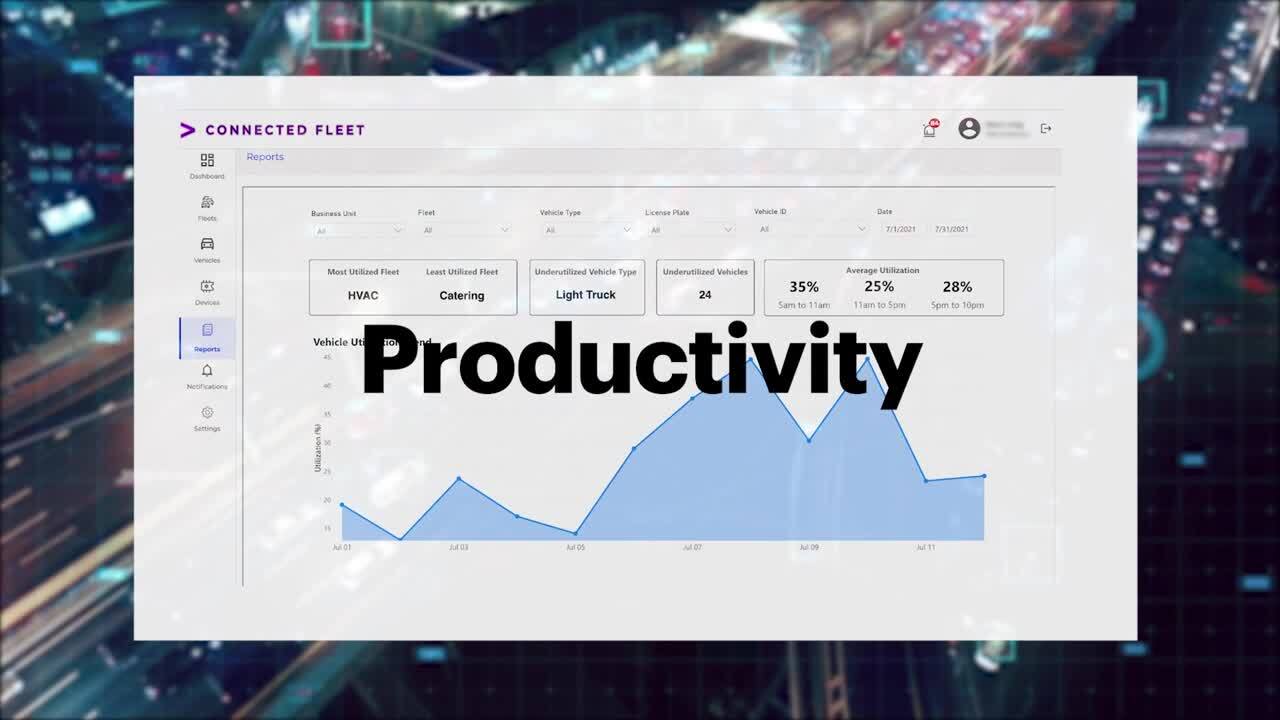CASE STUDY
Driving connectivity
Transforming fleet management for Microsoft’s global headquarters.
5-MINUTE READ
CASE STUDY
Transforming fleet management for Microsoft’s global headquarters.
5-MINUTE READ

Digitizing transportation
Microsoft’s Redmond location in the state of Washington is the company’s global headquarters and has the features of a bustling town: Its 520-acre campus is dotted with offices, creative workspaces, event venues, and recreational and leisure facilities. With approximately 55,000 employees associated with the location, Microsoft has created an environment to serve the daily needs of employees, visitors and service providers. Like any town, a network of transportation is needed to support and supply the wide-ranging activities.
As the world shut down from the global pandemic, Microsoft took advantage of decreased campus activity to unify the management of their transportation fleet. To connect the fleet, Microsoft’s own connected vehicle solution, Azure Mobility, was used, enabling data-driven decision making to help the company achieve its sustainability goals of reaching carbon negative by 2030. Accenture was then a natural choice of partner to extend the platform with a solution for fleet and vehicle management, handling the complexity of integration and tailoring to the specifics of the Microsoft fleet business.

Driving connectivity
The project goal was then: to understand fleet capacity and utilization, react to demand, optimize routes and intelligently maintain their sizable fleet. Throughout their Redmond campus, Microsoft manages a fleet of more than 500 vehicles: from trucks to passenger vans and buses covering transit, catering, mail, security and facilities management. Most of these vehicles were under management by third parties. Gaining real-time insight into the operation of each was difficult with reports being filed only on a quarterly basis.
Working with Microsoft’s Global Workplace Services team, Accenture created a roadmap for the digital transformation of the fleet experience. Collaborating with the company’s engineering team, the group brought best-in-class technologies to their global headquarters including their Mobility X fleet management accelerator.
The accelerator works with a wide variety of hardware and backend systems, and offers broad customization of interfaces, including the user interface (UI) and dashboards. Accenture’s accelerator provided a great foundation for the creation of this solution. The flexibility offered through Mobility X enables companies to prepare for, and ultimately shape, the future of their mobility services.
Operational efficiency + savings
Now thanks to the Accenture-Microsoft solution, the company is ready for when their workforce returns to campus. The integrated approach lowers downtime through predictive analytics that flags problems before they happen. The solution connects vehicles, drivers and operations, uncovering insights that can boost fuel efficiency and lower emissions, which is important given the company’s ambitious sustainability goals. What’s more, instead of waiting months, they now enjoy real-time information in every aspect of their fleet management.
With the implementation of the fleet management system complete at their global headquarters, Microsoft is looking to expand the solution to other locations to gain even more value by driving intelligent connectivity.